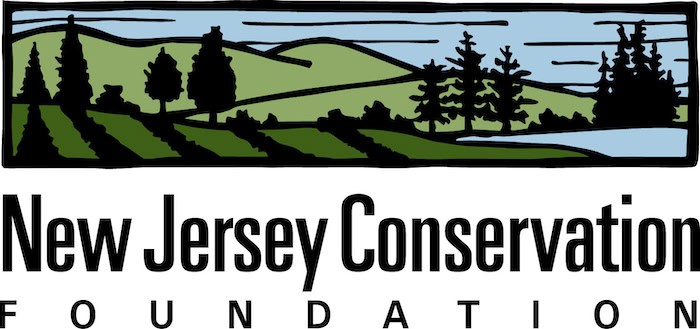By Alison Mitchell
Fueled by high winds and dry conditions, New Jersey’s largest wildfire in 15 years swept through Wharton State Forest in the Pine Barrens two weeks ago, burning more than 13,500 acres.
Thankfully, no lives or homes were lost, as the blaze occurred in a remote part of New Jersey’s largest tract of public open space. Wharton State Forest encompasses 122,800 acres (192 square miles) in Burlington and Atlantic counties.
While 13,500 charred acres may sound like an ecological catastrophe, it is just the opposite. Fire is an essential ingredient in making and keeping the Pine Barrens what they have been for thousands of years.
“In the Pine Barrens, wildfires that are so dangerous to people and their property are usually not destructive to the natural systems,” explains Dr. Emile DeVito, New Jersey Conservation Foundation’s staff biologist. “The Pine Barrens needs hot fires to persist, as do many of its rare species.”
The recent fire will ultimately benefit the ecosystem.
The Pine Barrens’ pitch pine/scrub oak forests are globally rare habitats and wildfires help preserve them for the region’s characteristic plants and animals.
Pine Barrens forests tend to burn easily because they have dense underbrush and dry, porous soil. Wildfires consume dry leaves, needles and twigs on the forest floor while temporarily thinning the tree canopy overhead.
With new areas of open canopy and understory, abundant sunlight falls on the forest floor and ashes enrich the soil. Some plants, like the Turkey-beard Lily, only germinate when ash-laden, “smokey” rain water stirs their long buried seeds to life.
Pitch pine trees, the dominant species, are uniquely suited to survive in wildfire conditions. Thick bark usually protects them from serious damage and they are often able to generate new shoots right out of fire-blackened trunks and limbs.
Often, when the entire above-ground portion of the pitch pine tree is killed, it will produce new shoots from underground buds.
What’s more, the heat from fires induces pitch pine cones to open and release their seeds, which fall in the soil and germinate in the newly available sunlight.
Shrub oaks in the Pine Barrens – different from tree oaks – are also well adapted to wildfires. Species like blackjack and scrub oaks have large, thick, tuberous root systems that ensure their survival.
“They are like big woody potatoes underground,” said Russell Juelg, New Jersey Conservation Foundation’s senior Pine Barrens land steward and educator. “They respond to fires by putting out vigorous shoots.”
Wildfires do kill many oak trees, but that helps maintain Pine Barrens forests as a pine-dominated system. Without fires, the forest balance would tip toward oak trees, altering the ecology of the Pine Barrens and creating habitats unsuitable for the region’s rare and characteristic species.
Before New Jersey was settled by European colonists, lightning and Native Americans would have sporadically set major fires in the Pine Barrens.
Today, hundreds of small wildfires occur each year in the region and most are quickly snuffed out by the New Jersey Forest Fire Service.
Homes and human lives are better protected that way, but Pine Barrens savanna habitats have dwindled as a result, leaving fewer individuals of rare savanna plants and the animals that depend on them.
These animals include red-headed woodpeckers, bluebirds, bobwhites, various moths, butterflies like the frosted elfin and arogos skipper, and scores of rare wildflowers.
The New Jersey Forest Fire Service also intentionally burns thousands of acres in the Pine Barrens each year.
These prescribed burns are controlled fires that enhance human safety by reducing potential fuel sources on the ground. They can also benefit ecological processes and biodiversity when certain methods are used.
Five years ago, a quite hot prescribed burn was conducted on 1,800 acres of New Jersey Conservation Foundation’s Franklin Parker Preserve in the Pine Barrens, which surrounds the village of Chatsworth.
The forest looked charred and desolate in the immediate aftermath, but no damage was done to the ecosystem.
Within months, pitch pines sprouted new branches, blackjack and scrub oaks sent out healthy new shoots, and huckleberries and ferns re-emerged.
A multitude of other Pine Barrens plants also benefited from increased sunlight and enriched soil, including turkey beard, sedges and little bluestem.
One pleasant surprise was the emergence of previously undocumented populations of Pine Barrens gentian, a beautiful, globally rare native flower that blooms in rich shades of blue and purple. The gentians had likely gone semi-dormant years earlier due to lack of sunlight and nutrients, but blossomed in the fire-altered conditions.
Wildfires like the recent one in Wharton State Forest – which is believed to have been started by an illegal campfire – are always a concern because of the potential risk to human lives and property, and potential harm to Atlantic White Cedar swamps which do not rebound from wildfires like the other fire-adapted forest types.
But carefully planned prescribed burns and allowing natural wildfires that do not pose a risk to burn in remote areas can help to reduce the risk of catastrophic wildfires and sustain the Pinelands ecosystem.
The charred outcome of the recent fire in Wharton State Forest is neither permanent nor catastrophic. It will take time, but the native species of the Pine Barrens will survive and thrive.
Wildfire risk is one important reason to keep permanently preserving land within the Pine Barrens.
Preservation also protects the region’s rich natural resources, rare plant and animal species, and the vast Kirkwood-Cohansey aquifer, a critical source of clean water that underlies the region.
Regional planning, specifically the Pinelands Comprehensive Management Plan, helps control sprawl and minimizes damage to property and lives by keeping development away from high-risk wildfire areas.
The plan is a national model of carefully planned growth and natural resource protection in a unique and ecologically important region, and New Jersey can be proud of protecting this special place.
To learn more about the Pine Barrens and its unique ecology, go to https://pinelandsalliance.org/
Alison Mitchell is a co-executive director of the New Jersey Conservation Foundation, Far Hills.

